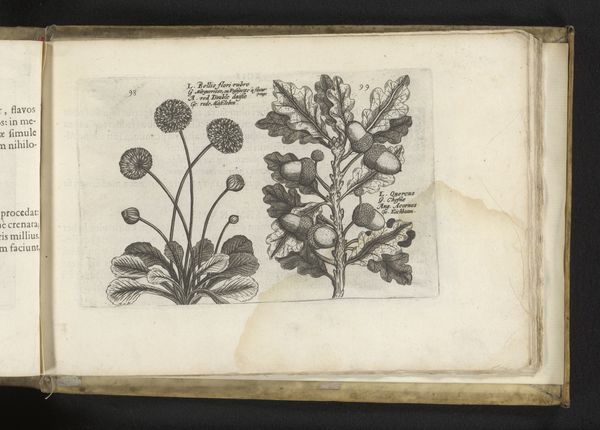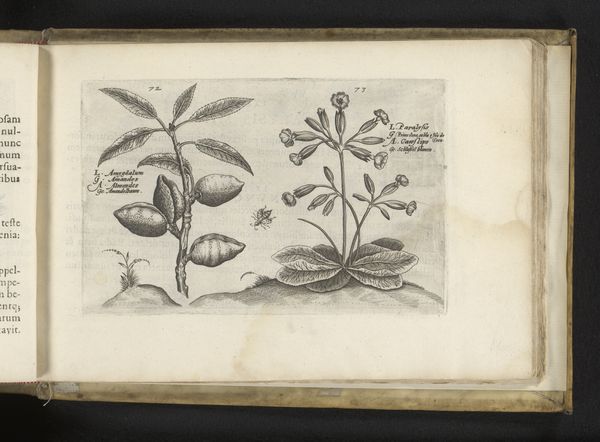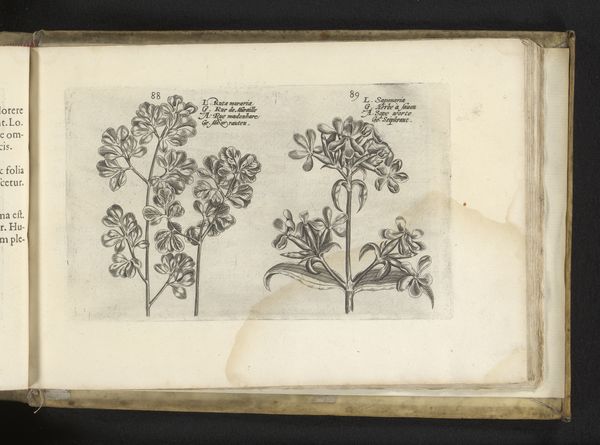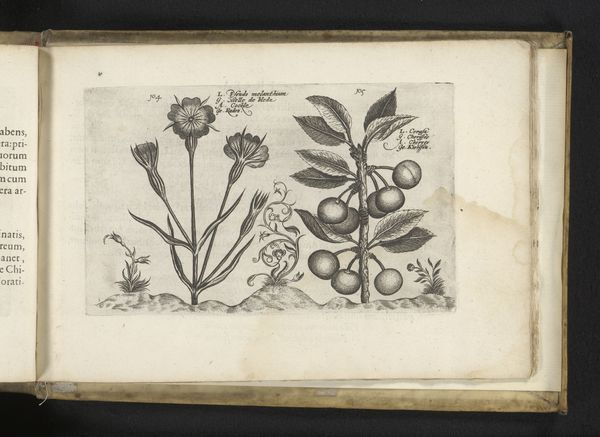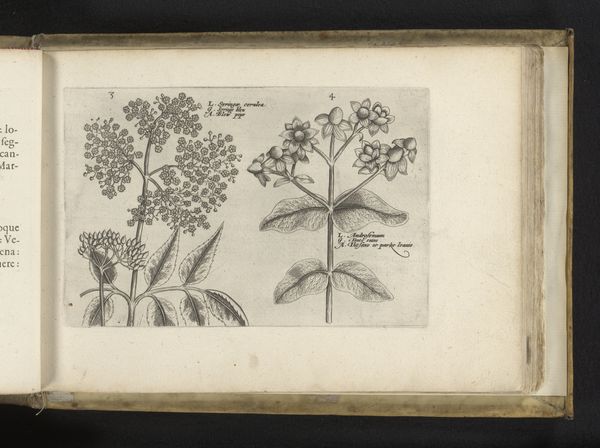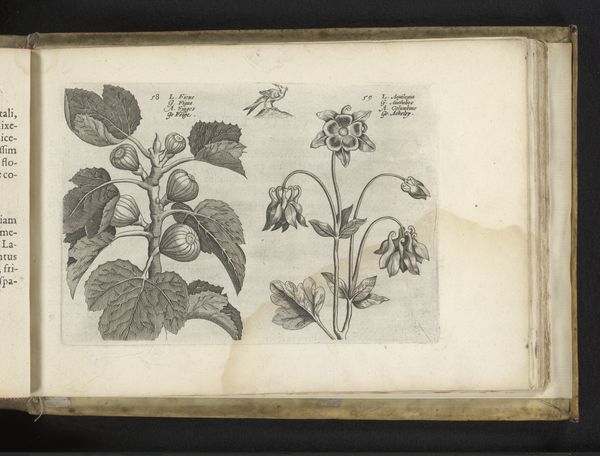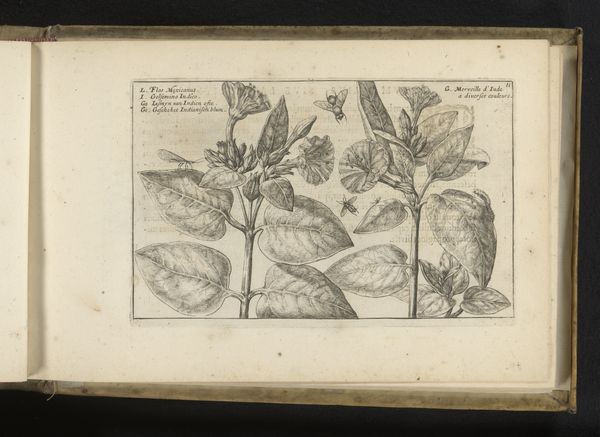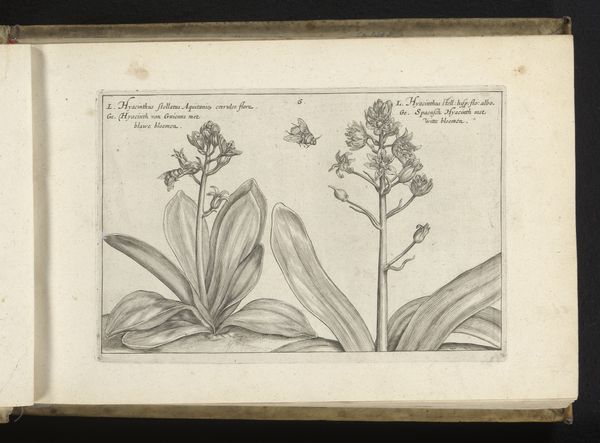
drawing, print, paper, engraving
#
drawing
#
ink paper printed
# print
#
flower
#
paper
#
northern-renaissance
#
engraving
Dimensions: height 127 mm, width 196 mm
Copyright: Rijks Museum: Open Domain
Curator: Let’s take a look at "Hertswortel en boerenwormkruid," an engraving dating back to 1617 by Crispijn van de Passe (II). It's currently held at the Rijksmuseum. Editor: My initial impression is one of stark simplicity and botanical exactitude. The lines are incredibly precise; the contrast is quite dramatic for an image printed on paper. There's an undeniable beauty in the geometric presentation of these flora. Curator: Indeed. This work, a print made with ink, emphasizes linear precision and form. Consider the cross-hatching used to delineate the veins of each leaf, and the shadows. The meticulous details draw the eye to the essence of each plant form and reflect the artist’s study and precision of lines, rather than painterly texture. Editor: But, thinking contextually, botanical prints from this period weren't just about aesthetics, were they? This work exists during a burgeoning period for global trade of natural elements. Herbalism was deeply intertwined with medicine, colonialism, and a growing attempt by Europeans to catalog the "natural world". Each carefully drawn element represents scientific ambition as much as an artistic exploration of nature. What was its social role, exactly? Curator: Certainly. Looking at the work from the purely structural angle, notice the very intentional layout choices, presenting these plants as specimens against the emptiness of the unprinted paper, framed perfectly with the page it’s displayed on. This is reminiscent of classical botanical illustrations—a structured visual language. The focus is solely on the objective form, without external flourishes, lending the work a certain detachment from narrative. Editor: Exactly, this “detachment,” as you say, is still significant to me. Though created within this frame, consider how the image then, and now, perpetuates our objective consumption and, frankly, control over these lifeforms. It's far from neutral, especially given its potential relationship to trade practices. To render them as art, almost as a trophy for understanding them, isn't an inconsequential act of power. Curator: It's compelling to consider that viewpoint. I find the engraving remarkable because it compels you to consider art and power this way. Thank you for these remarks; they enhance my understanding greatly. Editor: Thank you; engaging with the sociopolitical frameworks through the structure is essential in decoding artworks.
Comments
No comments
Be the first to comment and join the conversation on the ultimate creative platform.
